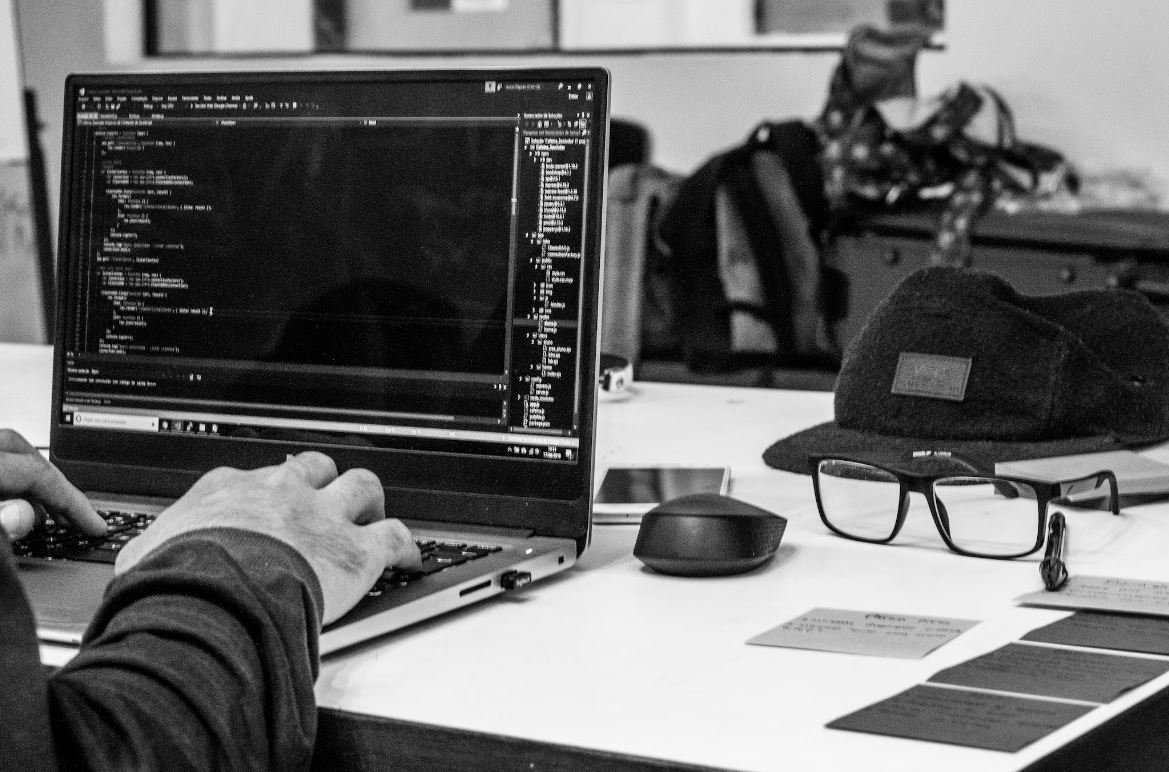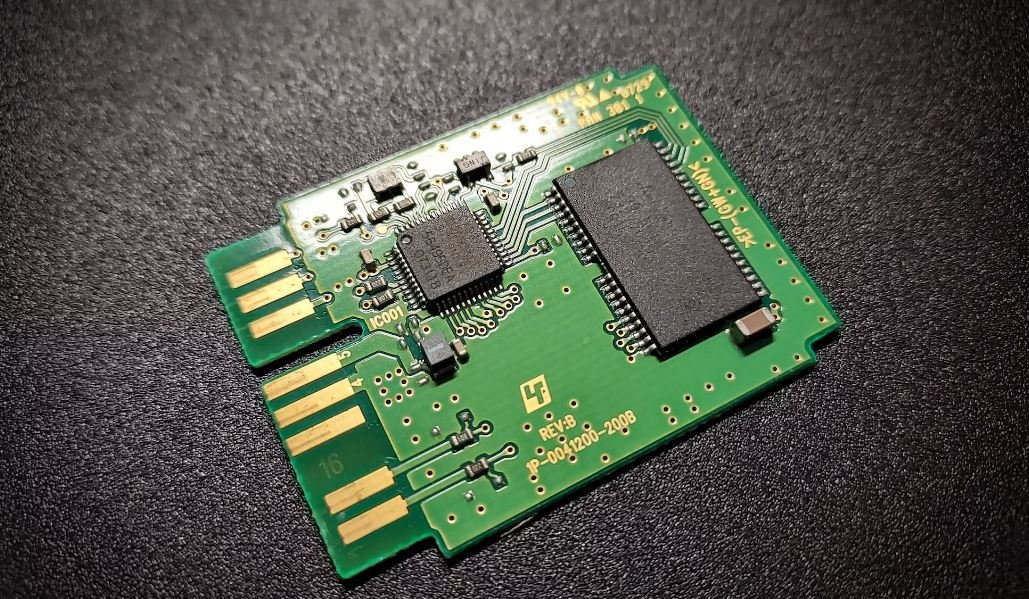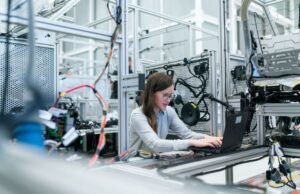What Deepfake Videos Are
Deepfake videos are synthetic media that appear real but are created using artificial intelligence (AI) algorithms and machine learning techniques. These videos superimpose someone’s face onto another person’s body or alter facial expressions and movements. Deepfake technology can be used for malicious purposes or entertainment purposes, making it essential to understand the potential risks and implications associated with this emerging technology.
Key Takeaways
- Deepfake videos are synthetically created videos that mimic real people and actions using AI and machine learning.
- They can be used for both malicious and entertainment purposes.
- The technology poses risks to privacy, reputation, and trustworthiness.
Deepfake videos are created by training an AI model with large datasets of images and videos of the target person. The model then learns to generate new video content that matches the target’s facial movements and expressions. This process allows creators to manipulate visuals and audio, resulting in highly realistic but fake videos. *Deepfake technology is constantly evolving, raising concerns about its potential impact on society.*
Deepfake videos can be used for various purposes, ranging from harmless entertainment, such as impersonating celebrities in movies or creating viral videos, to harmful activities like spreading misinformation, false claims, or blackmail. The potential for manipulation of public opinion and the erosion of trust in digital media is a growing concern. *It is essential to develop effective countermeasures and raise awareness about the existence and consequences of deepfake videos.*
One significant concern related to deepfake videos is the potential harm to individuals’ privacy and reputation. It becomes increasingly challenging to distinguish between real and fake videos, leading to the possibility of damaging someone’s personal and professional life through the dissemination of false information or compromising materials. *Deepfakes can cause significant harm to individuals and may require legal interventions to protect their rights.*
Understanding Deepfake Generation
The generation of deepfake videos involves a complex process that often requires substantial computational resources. It begins by collecting a significant volume of training data consisting of the target individual’s images and videos from various angles and expressions. The AI model then learns the patterns and features from this data, enabling it to generate realistic face swaps or simulations. *Deepfake generation is a resource-intensive task, requiring powerful hardware and extensive training datasets.*
Impact on Society and Digital Media
The rise of deepfake videos poses serious challenges to the trustworthiness of digital media. The ease of creating and spreading fake videos undermines the credibility of visual evidence, making it increasingly difficult to separate fact from fiction. As a result, digital media literacy becomes crucial to prevent the manipulation of public opinion and the potential spread of false information. *Society needs to stay vigilant and adapt to emerging technologies to maintain trust in digital media.*
Countermeasures Against Deepfake Videos
- Educating the public about deepfake technology and its potential risks is vital in reducing the susceptibility to misinformation.
- Developing advanced detection tools and algorithms to identify deepfake videos can help mitigate the potential harm caused by their dissemination.
- Encouraging platforms and social media companies to implement policies and tools to combat the spread of deepfake videos.
| Deepfake Video Applications | Examples |
|---|---|
| Entertainment Industry | – Deepfake videos in movies and TV shows – Celebrity face swaps in viral videos |
| Political Manipulation | – Spreading false information during elections – Misrepresenting political figures’ statements |
| Cybersecurity Threat | – Phishing attacks using trusted individuals’ deepfake videos – Voice manipulation for social engineering |
Deepfake videos are a rapidly evolving technology that brings both opportunities and risks. While they have the potential to revolutionize entertainment and visual effects industries, they also pose significant threats to privacy, reputation, and trust. To mitigate the impact of deepfake videos, it is crucial for individuals, organizations, and governments to remain vigilant, develop countermeasures, and promote media literacy. *Staying informed and cautious is key in navigating the world of deepfakes.*

Common Misconceptions
Misconception 1: Deepfake videos are always used for malicious purposes
Contrary to popular belief, not all deepfake videos are created with malicious intent. While it is true that deepfake technology can be misused to spread misinformation or defame individuals, it is important to remember that this technology also has legitimate and creative uses. Many filmmakers and photographers use deepfake technology for special effects and to bring characters to life in movies and advertisements. Additionally, researchers are exploring how deepfake videos can be used for educational purposes such as creating immersive historical reenactments.
- Deepfake videos can be utilized in the film industry for special effects.
- Deepfakes can be used by marketers to create engaging advertisements.
- Deepfake technology can enhance gaming experiences by bringing characters to life.
Misconception 2: Deepfake videos are always easy to spot
Another misconception surrounding deepfake videos is that they are always easy to identify. While some deepfakes may have noticeable flaws like unnatural facial movements or audio inconsistencies, the technology is constantly improving, making it difficult to detect. Advanced deepfake algorithms can generate highly realistic content that is nearly indistinguishable from genuine videos. This poses a significant challenge when trying to determine the authenticity of videos circulating online.
- Deepfake algorithms are constantly evolving, making it harder to spot fake videos.
- Some deepfake videos can have little to no visual artifacts, making them highly realistic.
- Audio deepfakes are becoming increasingly convincing, making it even more challenging to identify fake videos.
Misconception 3: Deepfakes can only manipulate video content
One common misconception about deepfake technology is that it can only manipulate video content. However, deepfake algorithms can also be applied to alter audio, text, and images. This means that not only can deepfakes create realistic videos, but they can also generate synthetic voices, mimic someone’s writing style, or produce images that never actually existed. The versatility of deepfake technology extends beyond video manipulation, making it a powerful tool in various domains.
- Deepfake technology can generate synthetic voices that sound like real individuals.
- Text deepfakes can mimic someone’s writing style, making it harder to distinguish fake content.
- Deepfakes can generate realistic images of people or objects that do not exist.
Misconception 4: Deepfakes are a recent development
Many people believe that deepfakes are a relatively recent development, but the concept of digitally manipulating media has been around for quite some time. Deepfake technology itself emerged around 2014, but the idea of manipulating or fabricating media dates back to much earlier. Techniques like photo editing and voice manipulation have been in use for decades, showing that the concept of falsifying content is not exclusive to recent advancements in artificial intelligence and machine learning.
- Deepfake technology emerged around 2014, but the concept of manipulating media is older.
- Photo editing software has been used to manipulate images for decades.
- Voice manipulation techniques have existed long before deepfake technology gained prominence.
Misconception 5: Deepfakes will completely erode trust in media
There is a prevailing fear that the rise of deepfake technology will completely erode trust in media and make it impossible to discern what is real from what is fake. While deepfakes do pose a threat to the authenticity of digital content, it is crucial to understand that there are countermeasures being developed to detect and combat deepfakes. Researchers and tech companies are actively working on developing tools and methods to identify fake videos, ensuring that trust in media can be restored and that viewers can verify the authenticity of the content they consume.
- Efforts are being made to develop technologies that can detect and identify deepfakes.
- Researchers are working on creating robust authentication mechanisms for media content.
- Collaboration between tech companies, academia, and governments aims to combat the negative impact of deepfakes on trust in media.

Video Editing Software Popularity
In recent years, the popularity of video editing software has skyrocketed. This table provides a snapshot of the market share for the most widely used video editing software in 2021.
| Video Editing Software | Market Share |
|———————–|————–|
| Adobe Premiere Pro | 45% |
| Final Cut Pro | 23% |
| Davinci Resolve | 15% |
| iMovie | 7% |
| Sony Vegas Pro | 5% |
Deepfake Distribution Channels
As deepfake technology has become more accessible, various platforms have emerged as significant distribution channels. This table showcases the top platforms where deepfake videos are commonly shared.
| Platform | Percentage of Deepfakes |
|————–|————————|
| YouTube | 40% |
| Facebook | 25% |
| Twitter | 15% |
| Reddit | 10% |
| TikTok | 5% |
| Other | 5% |
Deepfake Algorithms and Techniques
The creation of deepfake videos relies on sophisticated algorithms and techniques. This table highlights some of the primary algorithms and techniques employed in the development of deepfakes.
| Algorithm/Technique | Description |
|———————|———————————————————————————————————————————————————|
| Generative Adversarial Networks (GANs) | A two-part neural network system, consisting of a generator that produces fake data and a discriminator that tries to distinguish between real and fake data. |
| Autoencoders | Neural networks that aim to reconstruct input data, often used in deepfake technology to encode and decode faces. |
| Deep Neural Networks (DNNs) | Networks of interconnected artificial neurons inspired by the human brain. Used in deepfakes to recognize and mimic facial expressions and movements. |
Deepfake Detection Methods
As deepfake technology advances, so does the need for effective detection methods. This table outlines some common techniques employed to detect deepfake videos.
| Detection Method | Description |
|——————|————————————————————————————————————————————————————————————————-|
| Facial Analysis | Analyzing facial features and detecting inconsistencies in expressions, eye movements, or nasal flaring. |
| Micro-Expressions | Identifying quick, involuntary facial movements that can be difficult to feign and are absent in most deepfake videos. |
| Face Warping | Comparing the spatial transformations of a suspect face with a known genuine face and identifying discrepancies. |
| Metadata Analysis | Examining the metadata of the video file, such as timestamps, geolocation, and device information, to authenticate the source and determine if manipulation has occurred. |
Impact of Deepfake on Politics
Deepfake videos have increasingly become a concern in political contexts, making it vital to understand their potential impact. This table outlines notable examples of deepfakes used in political scenarios.
| Political Context | Deepfake Video |
|———————–|———————————————————–|
| Elections | Fake videos of candidates making controversial statements. |
| Speech Manipulation | Altering politicians’ speeches to spread false narratives. |
| Smear Campaigns | Creating videos that depict politicians engaging in illicit activities or unethical behavior. |
| Media Misinformation | Falsely attributing statements to political figures. |
Deepfake Regulations by Country
Given the potential risks associated with deepfake videos, several countries have taken steps to regulate their creation and dissemination. This table summarizes the regulations implemented worldwide.
| Country | Deepfake Regulations |
|—————–|——————————————————————————————————|
| United States | Limited regulations, primarily focused on criminalizing non-consensual pornography and defamation. |
| China | Strict regulations against deepfakes, including potential criminal charges and fines for offenders. |
| United Kingdom | Proposals for regulations related to deepfakes, with a focus on enhancing existing media legislation. |
| Australia | Combating deepfake misuse through existing legal frameworks, including laws against defamation. |
| Germany | Adopting comprehensive legislation to address deepfakes, particularly those used to deceive voters. |
Deepfake Use in Entertainment
Deepfake videos have found a niche in the entertainment industry, creating unique opportunities and challenges. This table illustrates the various ways deepfake technology is utilized in entertainment.
| Entertainment Sector | Deepfake Applications |
|———————-|—————————————————————————–|
| Film Industry | Replacing actors’ faces with those of deceased actors or enhancing performances. |
| Advertising | Superimposing celebrity faces onto different models or creating fictional characters. |
| Video Games | Realistic character animations by mapping facial expressions of voice actors. |
| Virtual Performances | Creating virtual concerts or bringing back deceased artists through holograms. |
Deepfake Ethical Concerns
The rise of deepfake technology has raised several ethical concerns, prompting discussions about its societal impact. This table highlights some prevalent ethical concerns associated with deepfake videos.
| Ethical Concern | Description |
|————————-|———————————————————————————–|
| Misinformation | Spreading false information that can affect public opinion and trust in media. |
| Privacy Invasion | Unauthorized use of personal images and videos for malicious purposes. |
| Forgery and Deception | Manipulating content to deceive viewers or defame individuals. |
| Consent and Consent Forgery | Violation of consent rights and potential forgery of consent for content manipulation. |
Deepfake Technology Advancements
The field of deepfake technology continues to evolve rapidly, with exciting advancements constantly emerging. This table showcases some recent breakthroughs in deepfake research and development.
| Advancement | Description |
|——————-|———————————————————————————————————————|
| DeepFaceLit | Applying deepfake technology to literature, generating AI-written novels mimicking the styles of renowned authors. |
| DeepVoice | Creating highly realistic fake voices using deep learning models, allowing for audio deepfakes. |
| DeepDream | A technique combining deep learning algorithms and artificial neural networks to produce surreal and artistic images. |
| DeepNude | Generating realistic, but non-consensual, nude images of females through deepfake technology. |
Deepfake videos have garnered significant attention due to their potential to deceive and spread misinformation. As the technology advances, it becomes crucial for society to remain vigilant and develop robust detection methods. However, deepfakes also present opportunities for creative expression and entertainment, making it important to strike a balance between regulation and innovation.
Frequently Asked Questions
What is a deepfake video?
A deepfake video is a manipulated video that uses artificial intelligence and machine learning techniques to replace the face of one person with the face of another person. The resulting video appears very realistic and can be used to create convincing fake videos of people doing or saying things they never actually did.
How are deepfake videos created?
Deepfake videos are created using deep learning algorithms and neural networks. These algorithms analyze and learn from a large dataset of images and videos of the target person and the person whose face will be swapped. By training the model on this dataset, it can generate realistic facial movements and expressions on the target person’s face, making it appear as though they are saying or doing whatever the video creator wants.
What are the ethical implications of deepfake videos?
Deepfake videos raise significant ethical concerns due to their potential for misuse. They can be used for malicious purposes such as spreading misinformation, defamation, or even blackmail. Deepfake videos can also erode trust and undermine the credibility of videos as evidence.
Are there any legal implications associated with deepfake videos?
Yes, there are legal implications associated with deepfake videos. Creating and distributing deepfake videos without the consent of the individuals involved can infringe on their rights to privacy and can be illegal in many jurisdictions. Additionally, using deepfake videos for malicious purposes, such as revenge porn or fraud, can lead to legal consequences.
How can deepfake videos be detected?
Detecting deepfake videos can be challenging, as they are becoming increasingly realistic. However, researchers are developing various techniques to identify deepfake videos, such as analyzing facial inconsistencies, checking for synthetic artifacts, and monitoring eye or blink patterns. Advanced AI algorithms and forensic analysis tools are also being developed to aid in the detection process.
What can individuals do to protect themselves from deepfake videos?
To protect themselves from deepfake videos, individuals can be cautious about the information they share online and with whom. Additionally, using two-factor authentication, strong passwords, and regularly updating privacy settings on social media platforms can help reduce the chances of personal information being used to create deepfake videos.
Can deepfake videos be used for positive purposes?
While deepfake videos have often been associated with negative implications, they can also be used for positive purposes. For instance, in the entertainment industry, deepfake technology can be used to recreate deceased actors or to bring historical figures back to life for educational purposes. Deepfake videos can also be used in creative arts and as a tool for digital storytelling.
What is the role of social media platforms in combating deepfake videos?
Social media platforms play a critical role in combating deepfake videos by implementing content moderation policies and investing in technologies to detect and remove deepfake content. They can also rely on user feedback to report and flag suspicious or potentially harmful deepfake videos, which helps in identifying and removing such content from their platforms.
How is the technology behind deepfake videos evolving?
The technology behind deepfake videos is constantly evolving. Researchers are continuously working on improving the realism and quality of deepfake videos, making them even harder to detect. On the other hand, efforts are also being made to develop better detection methods and techniques to stay ahead of the deepfake technology advancements.
What are the implications of deepfake videos for society and democracy?
Deepfake videos have significant implications for society and democracy. They can be used to spread misinformation, manipulate public opinion, and create distrust in media and political figures. Deepfake videos can challenge the authenticity of video evidence, leading to potential erosion of trust in our justice system. It is crucial to develop robust countermeasures and awareness to mitigate the potential harm caused by deepfake videos.




